Tariffs for utilities, including water bills, are constantly rising. To reduce costs to a minimum, it is imperative to keep all plumbing fixtures connected to the water supply in good condition. And if you constantly run water in the toilet, the problem needs to be addressed immediately.
Moreover, you can do it yourself, without resorting to the help of specialists.
Causes of malfunctions
The toilet bowl is a fairly complex plumbing fixture, consisting of a bowl and a drain tank. The latter serves to accumulate water coming from the water supply and quickly dump it into the bowl on command from a mechanical lever or button.
For all these processes, the shut-off valves placed in the tank are responsible. It depends on its serviceability whether water runs from the tank to the toilet all the time or only at your command.
Advice! You can only fix problems with drain fittings in the tank if they are minor. Otherwise, it is recommended to replace the mechanism completely. Its price is much less than the amount of money that you will pay for tap water drained unnecessarily into the toilet.
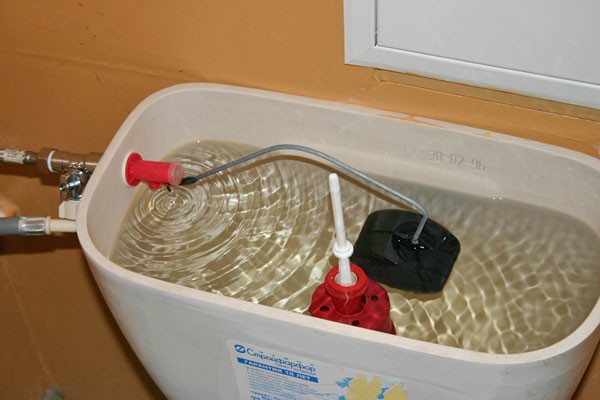
The most common problems are:
- water constantly enters the tank through the inlet pipe, to which the water supply is attached;
- the liquid all the time flows into the toilet bowl through the sealing membrane;
- water is discharged from the storage tank only after a few presses on the button or lifting the lever;
- the tightness of the drain tank is broken (the toilet bowl is running);
- water from the tap is too noisy;
- There was a leak in the toilet bowl itself.
Depending on why water is constantly running in the toilet, you need to start repairing:
- the drain tank itself;
- sanitary ware bowls.
Let's consider both options in more detail.
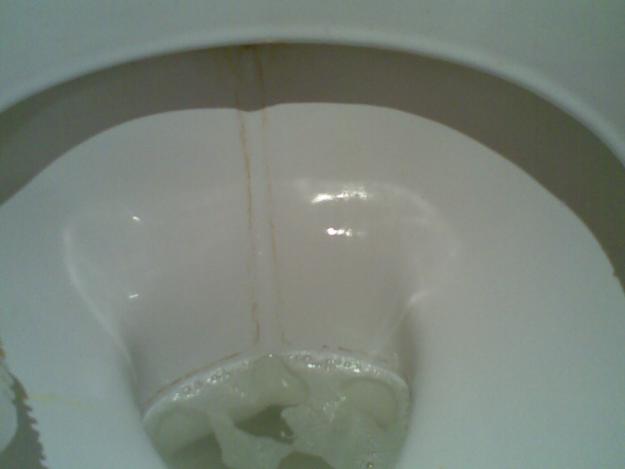
Troubleshooting
Cistern
So, what to do - if the toilet runs, but you don’t want to call a plumber and pay him for work?
Specific instructions for troubleshooting a tank or drain valve depend on what caused the problem:
- Skewed rocker float. You just need to fix the wire on which it is attached. It is also advisable to adjust the water level. Normally, the liquid should not reach the inlet pipe of the container by 2-2.5 centimeters.
- Float tightness broken. In this case, water gets inside the device, as a result of which it becomes heavier and does not properly perform the functions assigned to it.
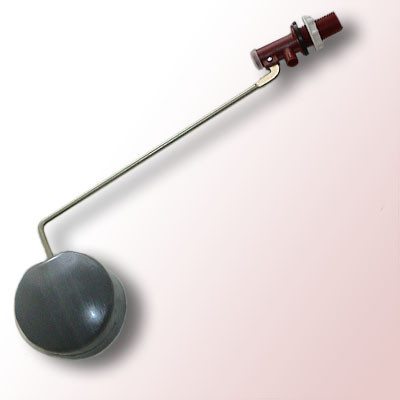
Dealing with trouble is pretty easy. It is necessary to remove the float, get rid of the liquid that has got into it, seal the hole and install the device back.
You can get rid of the leak as follows:
- heat a piece of polymer and close up a hole in the float with it;
- put several plastic bags on the device and fix them with an elastic band.
Note! The measures described above are temporary. If you find a leak in the float, you must urgently purchase a new fitting or repair kit and fix the breakdown. Otherwise, excess consumption of tap water cannot be avoided.
- Problems with draining water (to drain, you need to press a special button several times or pull the lever). The reason for this is the breakdown of the membrane sealing the siphon. You can, of course, clean it, but it is more expedient to replace the leaky node with a new one.
This is done as follows:
- the lid of the drain tank is removed, after which a small wooden block is placed on the container, which will serve as a support;
- a rocker holding the float is tied to the crossbar with the help of a reliable twine;
- the water located there is drained from the storage tank (of course, before that, you need to cut off the fluid supply from the water supply using the appropriate shut-off valves);
- the nut is unscrewed, which fixes the flush pipe going from the tank to the toilet bowl;
- the fasteners of the siphon are loosened, after which the entire structure is removed from the tank;
- the membrane that has become unusable is pulled out, and a new part is put in its place (at the same time, you need to make sure that it exactly matches the old one in size and shape);
- the drain mechanism of the tank is put in place, the rope is untied from the float and the container lid is fixed.
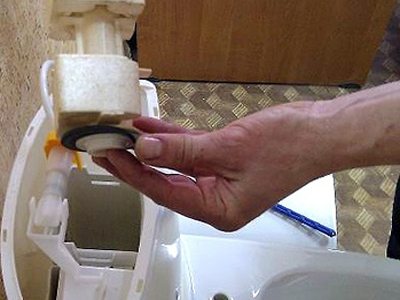
- The flush button doesn't work at all. You need to fix the traction that is out of order. It can be temporarily replaced with a piece of thick wire, but it is better to purchase a new one from a plumbing store. So you will ensure the longest possible functioning of the restored toilet bowl.
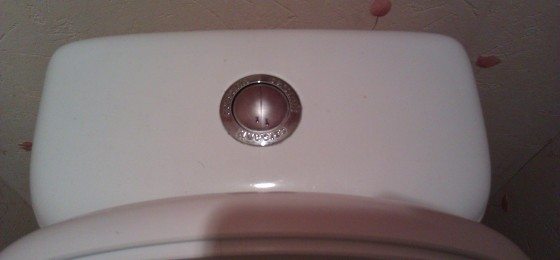
- Noisy tank filling. The sounds emitted by the liquid depend on the design of the container. It is advisable to take care of this even at the stage of buying a toilet bowl, giving preference to models with a lower eyeliner.
However, if the noise prevents you from sleeping normally, you can design a simple muffler on your own.
It is done like this:
- purchased in a suitable diameter;
- it is installed vertically in a container near the entrance to the float valve;
- the upper end of the tube should be above the water, the lower end - below it.
If the tricks described above did not help, you will have to purchase a stabilizing float valve or replace the old drain fittings with more modern options.
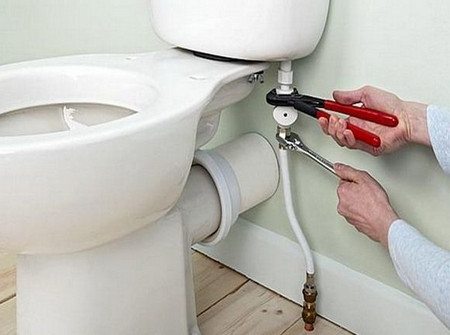
toilet bowl
Breakage of the toilet bowl itself is extremely rare. And most of them are caused by a violation of the installation order of the device: improper preparation of the base, too weak fasteners, and so on.
Advice! Errors during the installation of a plumbing device affect not only the quality of its work, but also safety. A "dancing" toilet can shatter and cause injury to the person using it. Be sure to correct any issues as soon as possible.
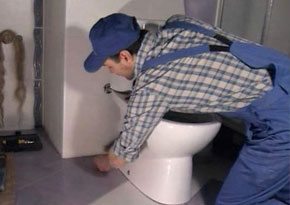
Possible causes of leaks associated with the toilet bowl are:
- the sealing pear of the drain mechanism does not fit snugly against the drain valve;
- the toilet seat is damaged by rust and has lost its tightness;
- the rocker holding the valve is incorrectly adjusted;
- the tightness of the joint between the drain container and the bowl is broken.
In all these cases, one or another assembly should either be replaced or sealed.
Conclusion
If all the problems described above are identified and eliminated, and the puddle under the toilet continues to appear, then the problem is most likely the incorrect installation of the piping - the hose connecting the water supply to the inlet pipe of the tank ().
For more information about the device of this node, see the video in this article.


















